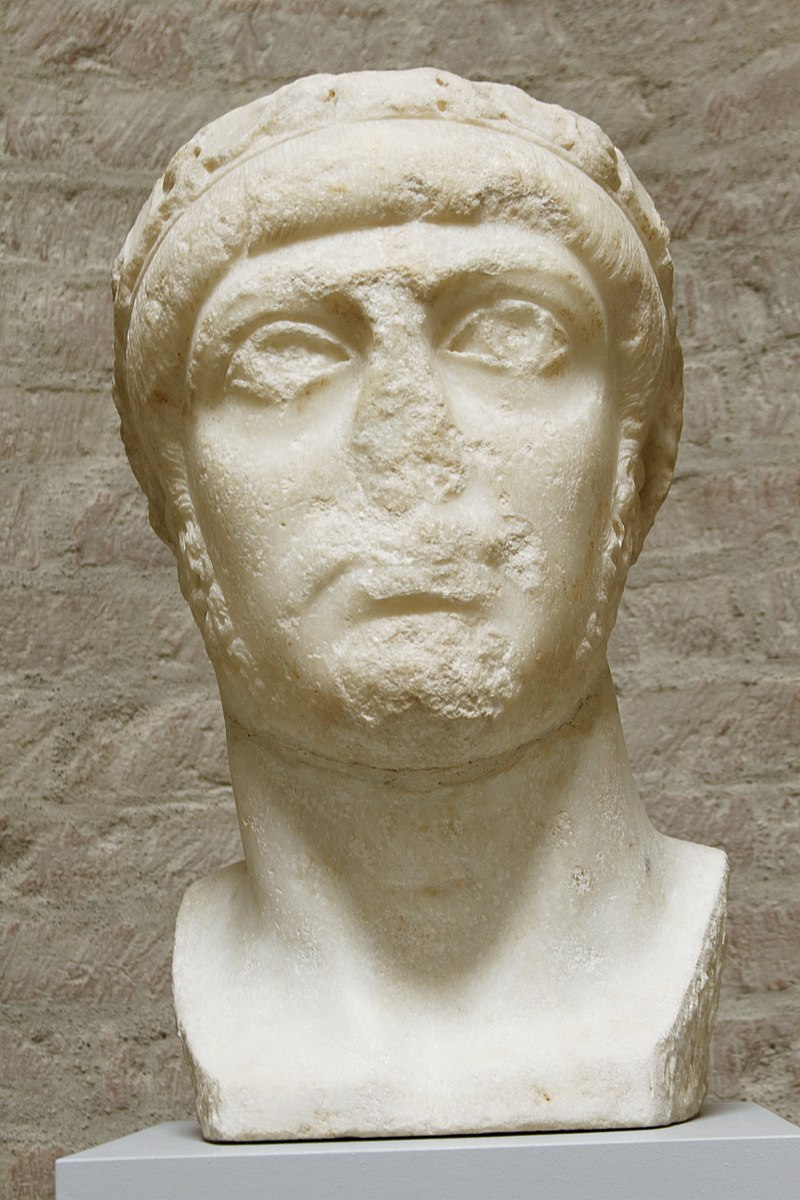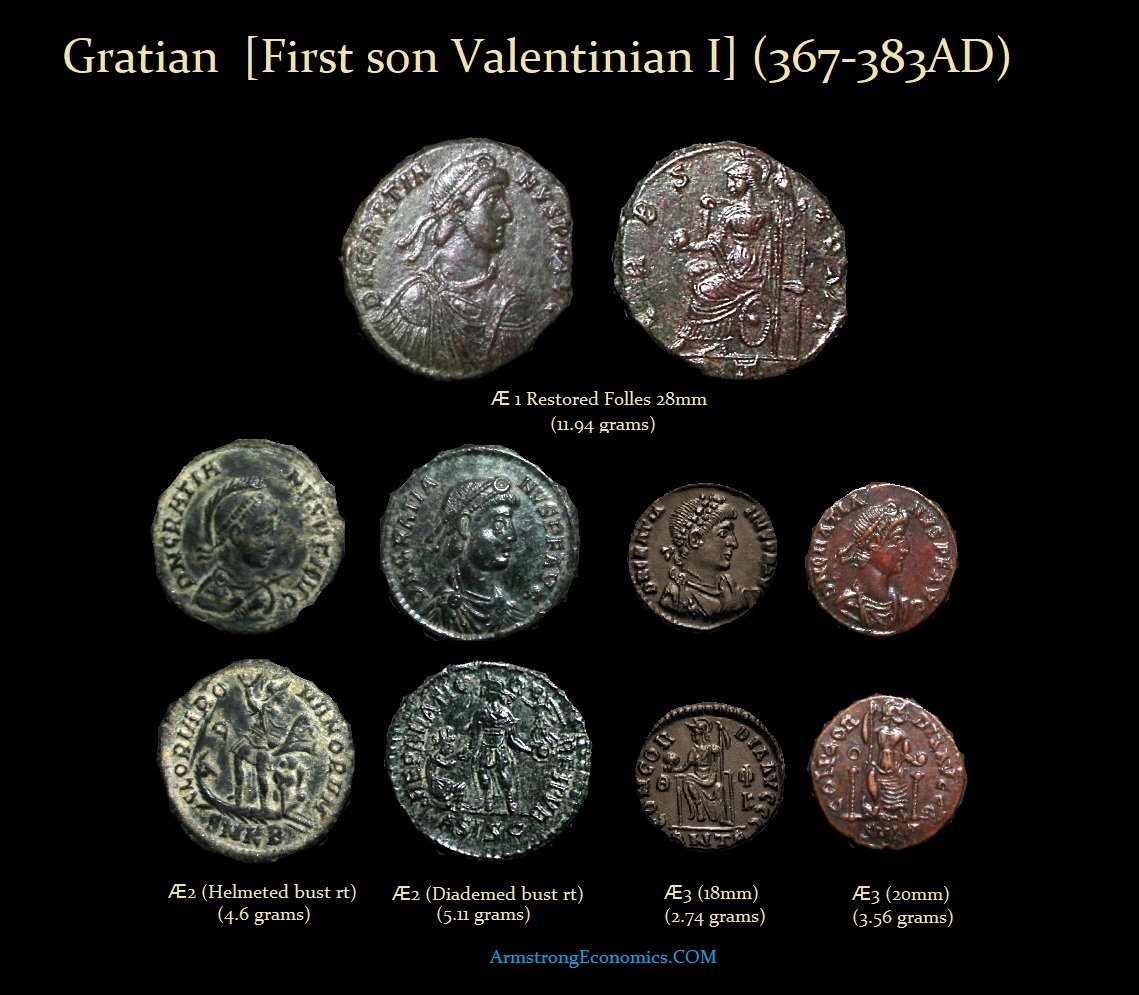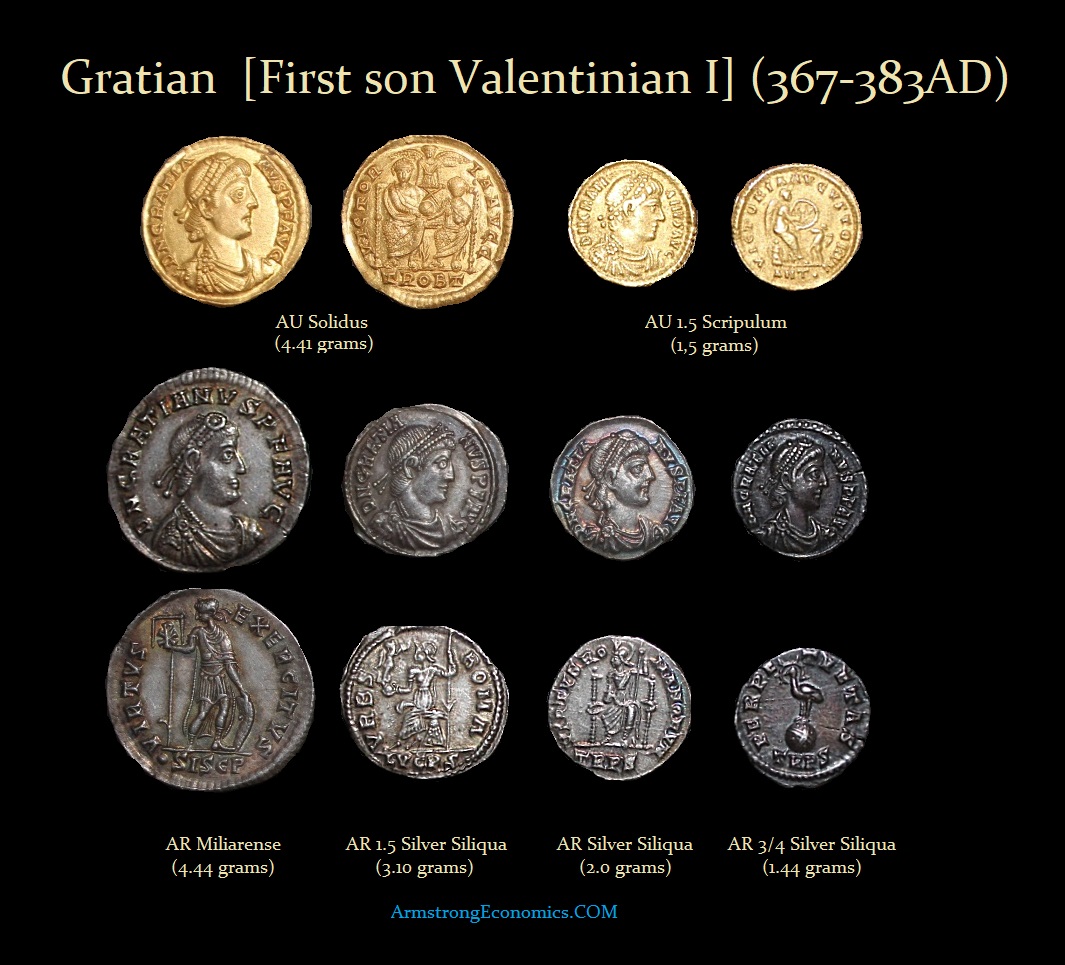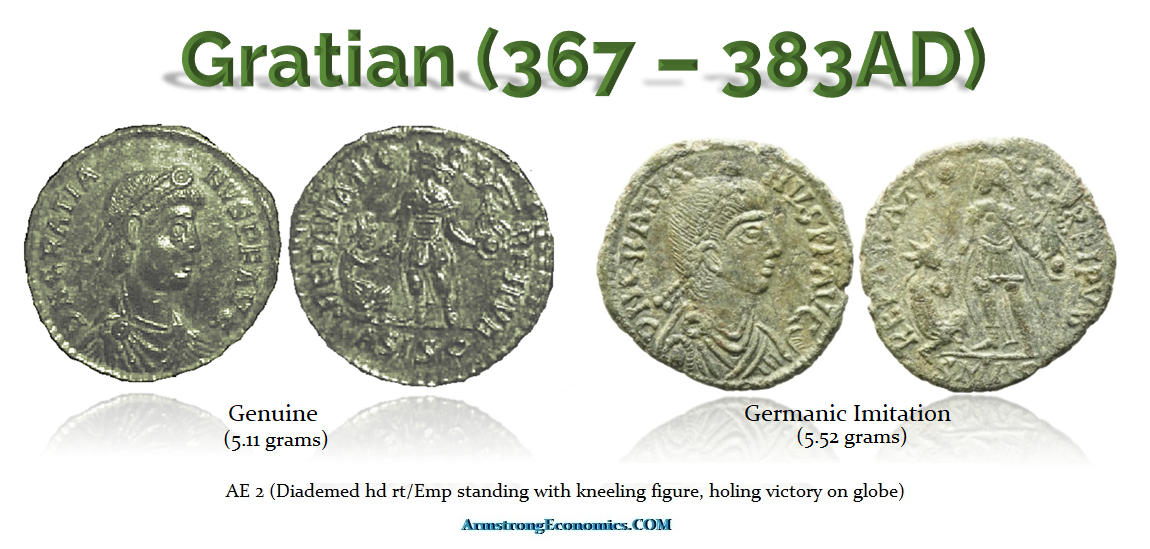Gratian
367 – 383 AD
Emperor of the West
Son of Valentinian I
Flavius Gratianus was the son of Valentinian I by his first wife, Severa. He was raised to Augustus at eight (367 AD). Following the disastrous battle of Hadrianopolis, in which Valens lost his life, Gratian became the senior Emperor of the West along with his 4-year-old brother Valentinian II. At the time, Gratian, the nephew of Valens, was nineteen years old. In reality, Gratian was, in effect, the sole ruler. Five months later (January 379 AD), Gratian appointed Theodosius I, his colleague in the East.
Gratian was a devout Catholic. He was the first Emperor of Rome to refuse the title pontifex maximus, which became a title reserved for the Pope. Gratian was also the first Emperor to order the removal of the Altar of Victory from the Senate House in Rome.
During 383 AD, a revolt broke out in Britain where his troops proclaimed Magnus Maximus Emperor. Maximus thereby invaded Gaul. Gratian found himself deserted by his own troops and attempted to flee in the direction of the Alps but was captured at Lugdunum on August 25th, 383 AD, and executed.
Monetary System

Silver Miliarense
Mints: Alexandria, Antioch, Arelate, Aquileia, Constantinople, Cyzicus, Heraclea, Lugdunum, Rome, Siscia, Sirmium, Thessalonica
Obverse Legends:
D N GRATIANVS P F AVG
Monetary Reform
Gratian introduced reform to the bronze coinage around 379 AD. In addition to Valentinian I’s AE3 denomination, Gratian introduced its double, the AE2, and its half denomination, the AE4. The average weights were thus AE2 4.5, AE3 2.3, and AE4 1.49, which closely resembled the weight standards used in the silver coinage from the Miliarense, the Siliqua, and Half-Siliqua. Hoard evidence suggests that the AE3 was the most common bronze denomination. This reform of Gratian prevailed for the most part until the bronze reform of Theodosius I. However, following his death, while the denominations remained constant, the weights were reduced to AE2 4.5, AE3 2.27, and AE4 1.13 sometime between 383 – 386AD.
DENOMINATIONS
AU 1 1/5 Solidus (Festaureus) AU Solidus (4.50 grams)
AU Semissis (2.25 grams)
AU 1½ Scripulum (1.65 grams)
AR Miliarense (4.50 grams)
AR 1½ Siliqua (3.45 grams)
AR Siliqua (2.25 grams)
AR 3/4 Siliqua (1.70 grams)
AR 1/2 Siliqua (1.12 grams)
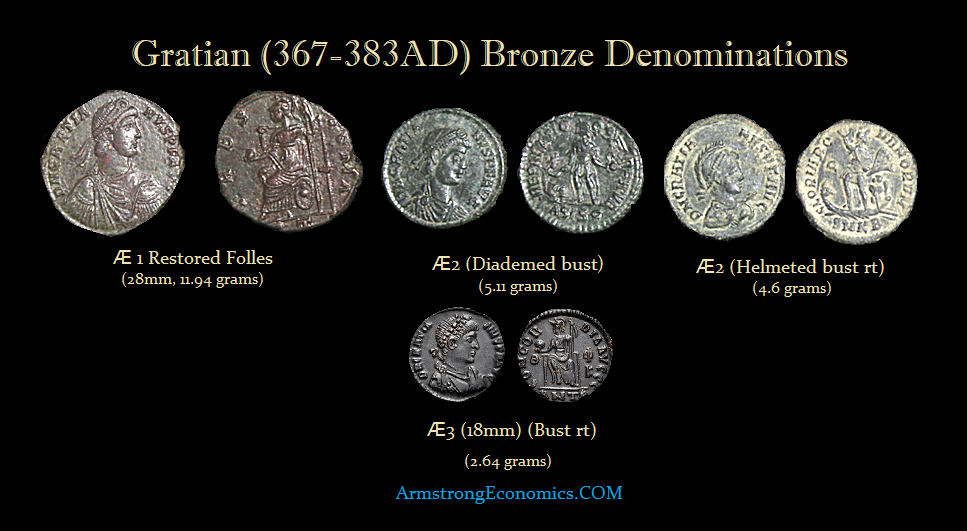
AE1(restored follis)
AE2
AE3
AE4

